
Photovoltaic solar panels capture solar energy using concentrated solar power. The solar system doesn’t contribute to increasing air or water pollution because they don’t have a chimney or sewage pipe.
Solar panels work with solar energy without releasing harmful pollutants or greenhouse gases into the air or water bodies. When you look at a solar energy system’s whole life cycle, it has always been about cleaning the environment and battling climate change.
However, the development and application of solar energy technologies are what come with environmental concerns. The developers keep the climate and environment in mind while designing these technologies. Metals and glass are used in solar energy technologies that need a lot of energy to produce clean energy.
Is Solar Energy Ideal for the Environment?
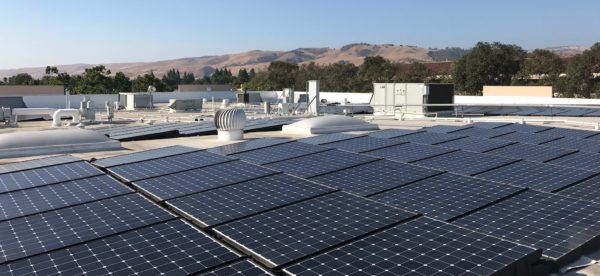
Solar energy is abundant in nature and limitless. When solar panels are used to generate energy, no pollution of the air or water is produced. Fuel transportation or waste product disposal is not necessary for the production of green energy.
Solar power generates electricity relatively quietly, hence no noise pollution and making it suitable for locations where noise pollution is an issue. Many rooftops are suitable for commercial solar panel installation. There is no need for a direct grid connection while using solar power because you become your own solar provider.
In rural areas, solar energy can generate electricity without connecting to the grid. This approach is more cost-effective as compared to extending long wires that run into distant sites.
Most PV systems can operate for up to 30 years or longer. Photovoltaic cells and panels are made with certain chemicals; developers handle them cautiously to prevent harmful environmental releases. They use heavy metals in manufacturing some PV cell technologies, and when their useful life is over, they know how to cater to them afterward and handle them differently.
Department of Energy in the United States has sponsored several initiatives to solve difficulties with solar energy technology, including recovering and recycling the materials used to make PV cells and panels. PV panel recycling is encouraged by regulations passed in certain states.
Large solar power plants can impact the environment where they are located or close by, just like any other sort of power plant, but there are some preventive measures to take to reduce their effects. Regular cleaning is all you need to keep the space fully functional and safe for the ones around. You’ll need water in some solar power facilities to clean solar panels and systems or cool turbine engines.
What is a Solar Farm?
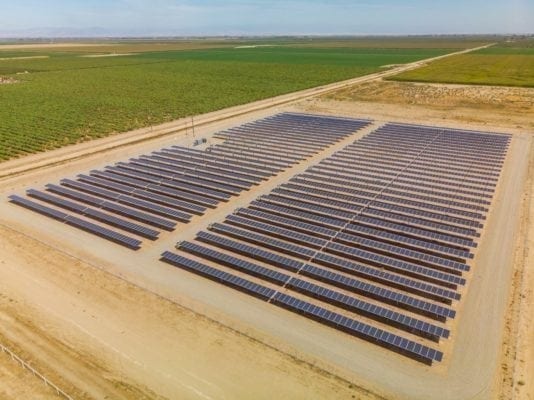
A solar farm assembles solar arrays on unused land to generate electricity using solar energy. In contrast to massive utility-scale solar farms built to provide enough electricity to power numerous houses and businesses, homeowners use solar panels on rooftops to meet their energy demands.
Although solar plants sound like conventional energy plants, the only difference between solar farms and conventional power plants is that the former creates zero pollution and uses nearly no water. Large commercial solar panels use hundreds or thousands of PV panels to turn the sun’s energy into electricity.
Types of Solar Farms
There are two types of solar farms.
Solar Thermal Energy Farm:
Solar thermal energy farms collect, transmit, and concentrate solar energy. It heats the fluid used for transfer and pumps it into the thermal engine, which turns the heat into power.
Photovoltaic Solar Farm:
PV panels are photovoltaic solar panels that generate electricity using solar energy. PV solar farms are becoming more and more common in various parts of the world.
Impact of Solar Farms on Water
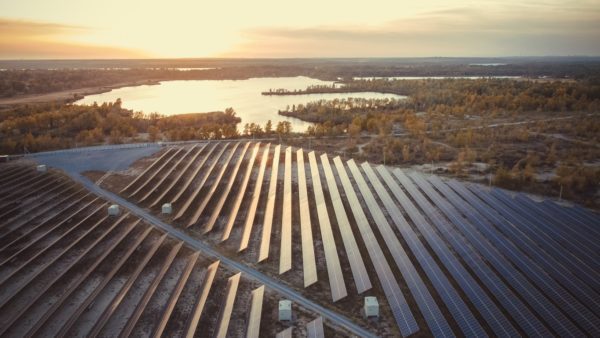
As the globe advances further and further away from fossil fuels, solar power is undoubtedly one of the most important green energy sources. Solar energy has been hailed as wholly sustainable, clean, and increasingly effective and affordable.
Production of Solar Panels and Its Effects on Water
The method of making solar panels is similar to all other production processes where water is used to make some components, such as photovoltaic units.
The Union of Concerned Scientists asserts that while solar energy consumes less water than conventional energy sources, the chemicals employed in its production could be harmful. There is always a chance of a spill of some type, which might cause these chemicals to seep into the ground and contaminate the water supply. To be honest, that is a risk that doesn’t just apply to producers of solar panels.
The Impact of Using Solar Energy On A Small Scale
No water is used in the energy production process of PV solar power or the panels planted on a small scale. Water is only used if the panels need to be washed to increase their effectiveness.
Small-scale solar energy is completely safe and environmentally friendly. Photovoltaic power plants only utilize less than one percent of the water, making them ideal energy plants to save water resources.
The Impact of Disposing of Damaged or Deactivated Panels
Various compounds are present in many solar cells, mainly in thin films. The cell offers no harm at all while it is functioning normally. Solar energy is still in demand, and the cells and panels produced in the 1970s are still being sold. So, it shows how reliable solar energy is and can last longer than expected.
However, it’s essential to develop appropriate and secure disposal methods to stop the chemicals from polluting the water, soil, and air upon the disposal of these panels. Fortunately, there is an additional motivation for manufacturers to investigate this; several of the elements found in cells must be collected because they are expensive and rare. This encourages individuals to research recycling and secure disposal.
Benefits of Solar Farms
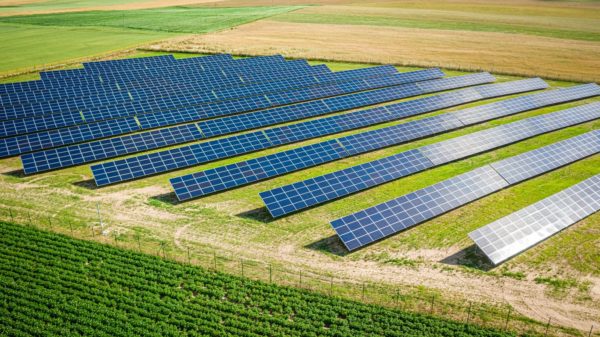
Solar farms have several advantages, some of which are discussed below:
1. Low Maintenance
The PV modules in solar farms harness solar energy to generate electricity. The modules require little upkeep after they are installed. These devices can function for almost twenty years without a check-up, except for semi-annual cleaning.
The same cannot be applied to oil or petroleum gas extraction machinery. Also, solar energy requires far less upkeep than wind turbines, which are also renewable sources of energy. There is not much else to do when the modules are running.
2. Eco-Friendly
Solar farms are vast arrays of PV panel installations extending across hundred acres of land. Regional and local power systems are linked together to run public utilities by harnessing solar energy to generate electricity.
They are a dependable source of electricity with no carbon emissions or damaging atmospheric discharges. Solar farms are a dependable source of electricity with no carbon emissions. They are a great renewable energy source that doesn’t rely on fossil fuels to produce electricity and fit within the desired framework of new clean power regulations, helping businesses transition to a greener future. You can use these large-scale solar farms to reduce the nation’s overall carbon footprint.
Solar energy doesn’t pollute either land or water. Oil and other non-renewable fuels occasionally leak or spill. PV panels or solar farms have never been linked to such widespread harm while powering up devices for a considerable time.
3. Sustainable
Solar customers are at peace knowing that the source capacity will be available in the future and now. The other non-renewable resources use a great amount of oil to generate electricity; it is not yet known if that will also be available in the future. Sunlight is always which is one of the most significant aspects of solar farms.
4. A Great Investment
The solar panels work all day to consume the sun’s energy and concentrate it on several silicon solar cells with positive and negative layers to produce an electrical field. A battery or an inverter uses the direct electrical current produced by PV panels and turns it into AC, which will then be used for storage.
The PV panels also capture scattered sunlight. After traveling via a substation, this alternating current will either be dispersed to homes and businesses at a lower voltage or carried long distances at a high voltage.
The return on investment for solar energy is high, especially compared to monthly electricity costs. Using the sun’s energy significantly reduces production and maintenance costs while providing customers with a more cost-effective energy source.
Furthermore, it lowers the cost of building and producing solar farms due to the incentives provided by the federal government.
5. No Noise Pollution
The lack of moving parts in solar farms makes them the most peaceful option for generating electricity. It doesn’t contribute to noise pollution and has low environmental disruption. It is one of the essential aspects of this revolutionized technology.
Coldwell Solar Can Design and Install Your California Solar Farm
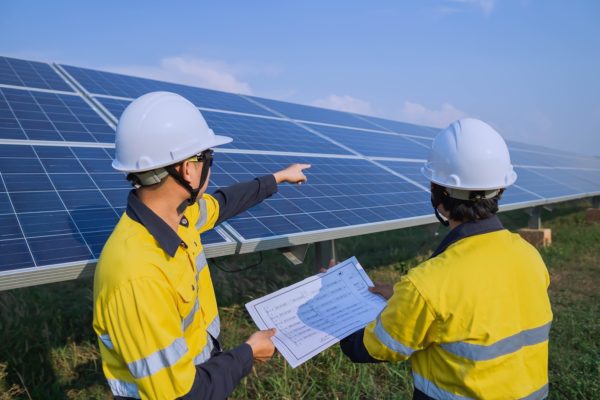
Solar farms provide a reliable energy source and are trending worldwide due to their environmentally friendly and sustainable nature. Solar panels don’t pollute the air or water in any manner. Several commercial buildings use solar power to generate their electricity.
If you need detailed information regarding solar farms, contact Coldwell Solar for more information.

